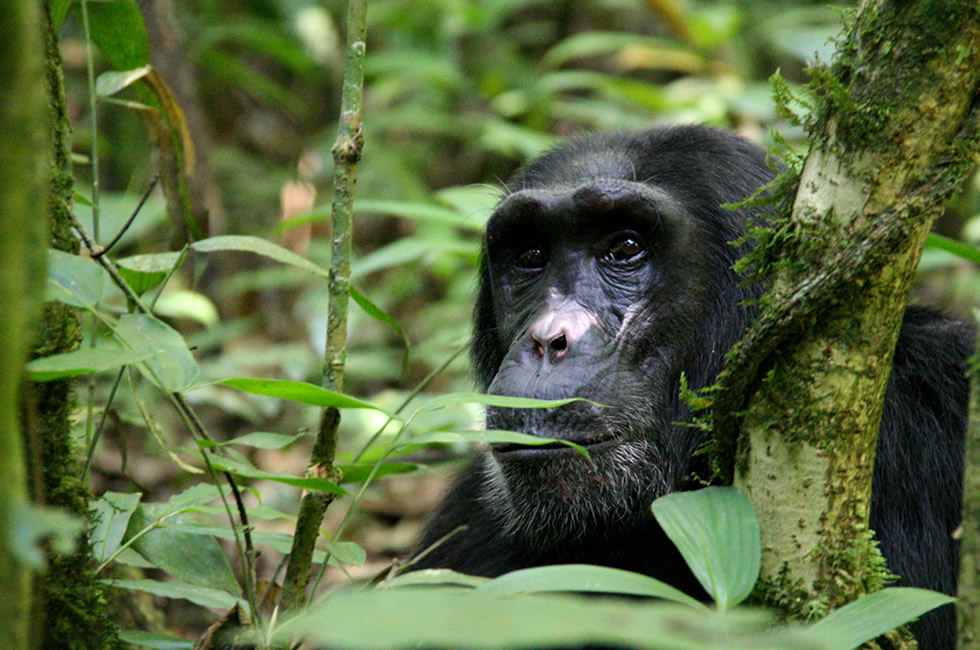Apes are primates without tails so, chimpanzees are among them. Chimpanzees are found in the tropical rain forests of Africa in countries like Sudan, Tanzania Senegal and Angola in the West. It is recorded that Democratic Republic of the Congo (DRC) has the largest population of chimpanzees according to the recent census however; it is disappointing because chimpanzees are becoming extinct in some areas of the world due to wars, disease and poaching.
In African, chimps grow to reach heights of 3 to 5 feet, and weigh up to 120 to 200 pounds. They are predominantly black, sometimes with gray color on their back after 20 years of age. In other words, growth and development of chimps changes as they grow.
Chimps are social and they live and move in groups of 15- 20 members and they are the most social of all the apes in the wild. Like Gorillas with silverbacks, the troops of chimps are headed by a mature male and elder chimp.
Sometimes, chimp groups split to form other sub groups with new leadership of male chimps. Male chimps leave the community where they were born – they can form their own groups or join new troops.
Female chimps often migrate to a new community during an adolescent estrus period. In the process, they try to look for male chimps for mating and finally bare offspring. Just like human being, chimps do not want to produce from fellow relatives so; females leave the group to look for males in different troops for mating.
Chimpanzees move mostly on the ground by knuckle walking. They are intelligent and are capable of using sticks and stick in their daily activities.
Chimpanzees groom each other daily, and this activity has an important social function of calming and comforting individuals and solidifying their bonds with each other.
Mothers often move with their offspring for grooming and protection
Chimpanzees construct nests at night in which to sleep.
Male chimps cooperatively hunt for meat. Hunted meat is shared among the troop members
Wild chimps mostly feed on fruits, insects, birds and small mammals.
Chimpanzees are capable of using tools to gain access to food, such as fishing for termites with sticks fashioned for the job and cracking open nuts with anvil-like rocks. They use tools like sticks, stones and so on.
Females in estrus have a prominent swelling of the pink perineal skin that lastis two to three weeks and occurs every four to six weeks. Females give birth every 4 -5 years and their gestation period is eight to nine months just like human being.
Chimpanzees have a long mother-infant dependency period. Infants will nurse on their mothers for five years and stay with their mothers several more years learning to care for younger siblings.
The life span for chimpanzees is 40 to 50 years in the wild and over 50 to 60 years in captivity.
CHIMPANZEE TREKKING
Chimpanzee trekking is the process by which people look for chimps in their natural habitat. It is done for enjoyment, research and for business reasons. In Africa, chimpanzee trekking is done after briefing by the rangers and a limited number of trekkers visit a troop of chimps.Would you like to see chimpanzees in the wild. There are lots of safaris in Uganda with opportunities to track habituated chimpanzee families.
In Uganda chimps are trekked in Kibale Forest national park, Kyambura gorge of Queen Elizabeth national park and Budongo forest. In Captivity chimps are found in Uganda Wildlife Education Centre, Entebbe and Ngamba Island in Lake Victoria. In Rwanda, chimps are found in Nyungwe Forest national park.


















